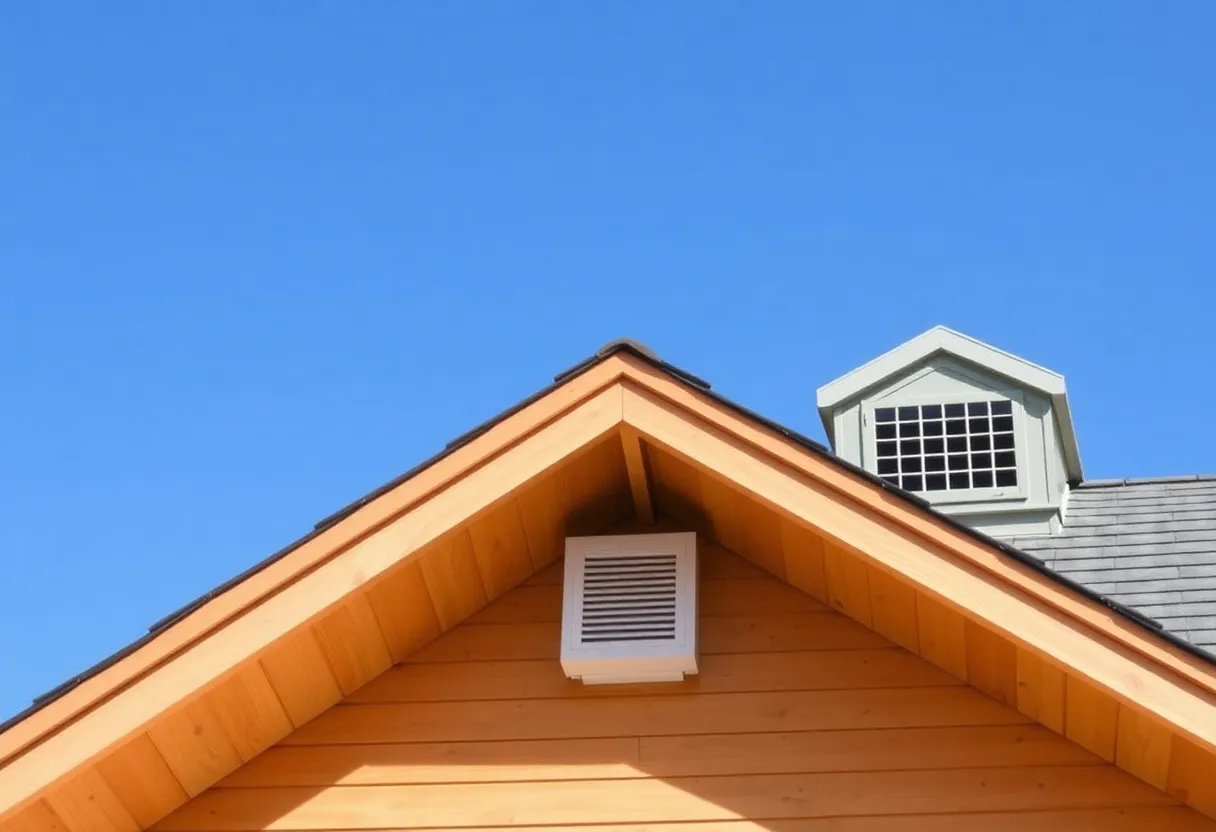How to Maximize Your Roof’s Ventilation for Improved Energy Efficiency
Proper roof ventilation plays a crucial role in maintaining your home’s energy efficiency. It helps regulate temperature, prevents moisture buildup, and extends the lifespan of your roofing materials. In this article, we will explore practical strategies for maximizing your roof’s ventilation to achieve enhanced energy efficiency.
Understanding Roof Ventilation
Roof ventilation involves the exchange of air between the attic space and the outside environment. This exchange is vital for several reasons:
- Temperature Regulation: A well-ventilated roof helps maintain a balanced temperature, preventing overheating in summer and minimizing heat loss in winter.
- Moisture Control: Effective ventilation dispels excess moisture, reducing the risk of mold, mildew, and rotting materials.
- Energy Efficiency: By regulating temperature and moisture, proper ventilation can lower energy costs for heating and cooling.
Types of Roof Ventilation
There are two primary types of roof ventilation:
1. Passive Ventilation
Passive ventilation involves natural airflow without the use of mechanical systems. It includes:
- Soffit Vents: Located under the eaves, these vents allow cool air to enter the attic.
- Ridge Vents: Positioned along the roof’s peak, they facilitate hot air escape.
- Gable Vents: Installed in the end walls of attics, they promote cross-ventilation.
2. Active Ventilation
Active ventilation uses electric or solar-powered fans to enhance airflow. This type is often deployed in situations where passive ventilation is insufficient.
Calculating Ventilation Needs
To determine how much ventilation your roof requires, you can use the rule of thumb: for every 300 square feet of attic space, you should have 1 square foot of ventilation. This can be accomplished using a combination of intake and exhaust vents.
Use the Ventilation Ratio
The recommended ratio for optimal ventilation is 50% intake and 50% exhaust. For instance, if you need 10 square feet of ventilation, aim for 5 square feet of intake vents and 5 square feet of exhaust vents.
Enhancing Roof Ventilation
Maximizing your roof’s ventilation requires a systematic approach. Here are several ways to improve airflow in your attic:
1. Inspect Existing Vents
Regularly examine existing vents for blockages. Leaves, insulation, and debris can obstruct airflow. Clearing obstructions allows for optimal performance.
2. Install Additional Vents
Consider adding more vents if needed. Increasing the number of intake or exhaust vents can improve overall airflow. Consult with a professional to determine the best placement and type of vents.
3. Use the Right Insulation
Insulation can greatly influence ventilation efficiency. Ensure insulation does not block airflow. Use baffles to maintain an open path for air movement.
4. Opt for Ridge Vents
Ridge vents are among the most effective forms of passive ventilation. They remove hot air efficiently, promoting a cooler attic space. Installing ridge vents can improve energy efficiency significantly.
5. Consider Power Vents
For homes with limited passive ventilation, installing power vents can be beneficial. These devices actively expel hot air, ensuring consistent airflow in the attic.
Seasonal Maintenance Tips
Regular maintenance is essential for ensuring that your roof ventilation remains effective year-round. Here are key tasks to include in your seasonal home maintenance checklist:
1. Clear Debris
Remove leaves, branches, and other debris from around the vents. This maintenance task can prevent blockages and promote optimal airflow.
2. Inspect Vent Condition
Examine vent grilles, caps, and baffles for damage. Replace or repair any compromised components to preserve ventilation efficiency.
3. Monitor Attic Conditions
Check for excess moisture or an unusual increase in temperature in the attic. These signs may indicate insufficient ventilation or blocked airflow.
The Benefits of Improved Roof Ventilation
Maximizing your roof’s ventilation offers numerous benefits:
1. Extended Roof Lifespan
Proper ventilation mitigates heat and moisture-related damage, leading to a longer lifespan for your roofing components.
2. Lower Energy Costs
Improved ventilation can lead to significant energy cost savings. By regulating temperatures, HVAC systems do not have to work as hard, lowering energy consumption.
3. Enhanced Indoor Comfort
A well-ventilated attic translates to a more comfortable indoor environment. Consistent temperature and humidity levels contribute to a pleasant living space.
4. Improved Air Quality
Effective ventilation reduces mold and mildew growth, contributing to improved indoor air quality. This is particularly crucial for individuals with allergies or respiratory issues.
When to Consult a Professional
While many ventilation improvements can be made as DIY projects, certain situations necessitate professional intervention. Consider consulting a contractor when:
- The roof requires complex modifications, including structural changes.
- Your home is experiencing persistent humidity problems, mold, or roof damage.
- You lack the experience to safely perform maintenance tasks.
Conclusion
Maximizing your roof’s ventilation is a vital component of energy efficiency. By understanding the principles of ventilation and implementing effective strategies, you can enhance your home’s comfort while reducing energy costs. Regular maintenance and inspections ensure that your ventilation system continues to function optimally over time.





 Mays Contracting
Mays Contracting

